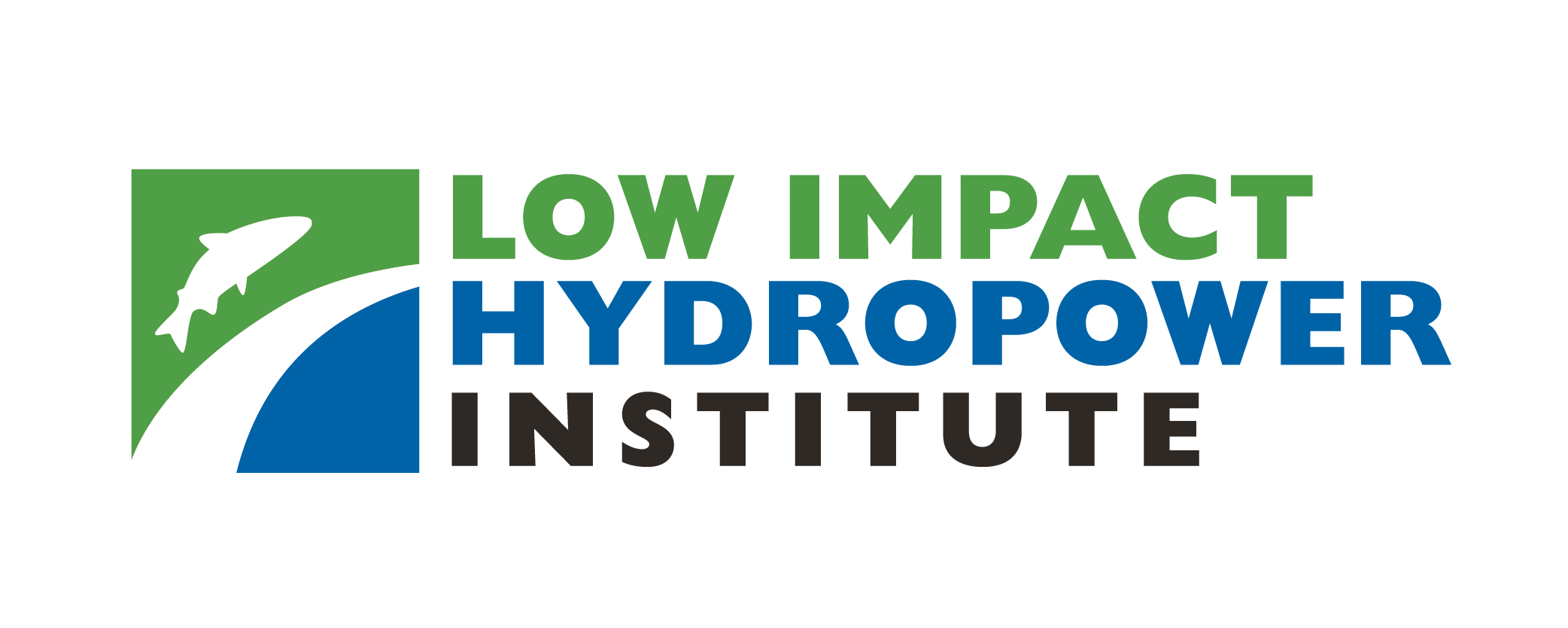LIHI 證書 #159 – 紐約馬科姆項目

| 項目名稱 | 馬科姆 |
| 理海證書編號 |
159 |
| LIHI 證書期限 | 2019年4月26日 – 2029年4月25日 |
| 擁有者 | Erie Boulevard Hydropower, LP,布魯克菲爾德再生能源集團的子公司 |
| 狀態 | 紐約 |
| 地點 | 北薩蒙河 17.3 英里河段 |
| 裝置容量 | 1.0兆瓦 |
| 平均年發電量 | 6,200 兆瓦時 |
| 設施類型 | 河流的奔流 |
| 聯邦能源監管委員會 不。 | P-7321 簽發日期:2006 年,效期至:2041 年 11 月 30 日 |
馬科姆計畫是紐約州富蘭克林縣馬龍鎮「北」薩蒙河(不要與奧斯威戈縣的薩蒙河混淆)最下游的水力發電計畫。從其 源頭 這條河位於阿迪朗達克山脈,向西北流經約50英里,最終在魁北克省鄧迪附近與聖勞倫斯河匯合。該項目最初建於1899年,其唯一目的是發電。第二個 發電站 建於 1904 年(高瀑布 2 號),位於原發電站上游,該發電站於 1940 年退役。 1940 年至 1987 年間,該發電站進行了多次改進。薩蒙河上還有其他幾座水壩,包括山景工程、 峽谷工程 (LIHI #158)、Ballard Mill 和 Whittelsey 項目,均位於 Macomb 上游。
該項目包括: 壩, 融合的 溢洪道, 壓力水管、兩個進水口結構、發電站、 導流管,以及一台渦輪機。
大壩為混凝土重力溢流式,長106英尺(約30公尺),高32英尺(約9公尺)。兩座石砌取水口結構均採用混凝土封頂,分別位於大壩兩端,與溢洪道呈90度角。河流右岸(順流而下)的取水口結構由一個手動操作的鋼製滑動閘門組成,該閘門位於直徑6英尺(約1.8米)的管道上游端,該管道直接排放至大壩下游。河流左岸的取水口結構長38英尺(約11公尺),高25英尺(約7.6公尺),也有手動操作的鋼製滑動閘門。開啟後,水流經由閘門進入直徑6.5英尺(約1.8公尺),長60英尺(約18公尺)的門鉚接鋼製壓力水管,壓力水管通往發電廠。取水口設有淨距為1吋(約2.5公分)的攔污柵,全年可運作。發電站內設一台裝置容量為1.0兆瓦的水平式混流式水輪發電機組。取水口和壓力水管形成一個約100英尺(約30公尺)長的短旁路段。
該計畫在拉米卡湖(Lamica Lake)的蓄水池中蓄水,佔地14英畝。當河流流量超過125立方英尺/秒(約37.7立方公尺/秒)時,工程採用脈衝模式運作。並努力將蓄水波動保持在水壩頂部0.25英尺(約0.7公尺)以內。當河川流量不超過125立方英尺/秒(約37.7立方公尺/秒)時,工程採用徑流模式運作。此流量方案是與美國魚類及野生動物管理局(USFWS)和紐約州環境保護部(NYSDEC)協商制定的。
計畫河段水域被指定為 C 類水域,最適合用於捕魚、魚類繁殖和初級/次要的休閒活動 在適當的情況下。該計畫根據沉積物管理計畫實施,旨在最大限度地減少可能影響下游棲息地和人口的沉積物排放的可能性。
該項目位於天然瀑布的所在地,瀑布歷史上曾形成水力屏障,阻止 溯河洄游魚類 避免路過該項目。雖然薩蒙河曾經是淡水梭魚、梭子魚和北梭魚的棲息地,但拉米卡湖目前的魚類群落主要由鱸魚和牛頭魚等溫水魚類以及透過放養方式獲得的褐鱒和虹鱒組成。美國內政部目前沒有計劃 魚道 該項目的處方。 1吋間距的垃圾架可防止 夾帶 而魚類放養管可讓紐約州環保署將鱒魚直接放養到尾水中。
本計畫用地面積約9英畝。工程週邊土地用途主要為低密度住宅、商業、休閒、農業及林業。 0.25英尺的蓄水波動限值有助於最大限度地降低侵蝕風險,並保護 濕地, 河岸以及項目附近的沿岸棲息地。當上游流入量超過700立方英尺/秒時,此項目也會進行沉積物沖洗程序 鴻溝項目.
計畫附近可能存在的受威脅或瀕危物種包括北長耳蝠。根據與紐約州環境保護部自然遺產計畫的磋商,計畫區域內沒有關鍵棲息地或列入名錄的物種記錄。計畫運作必須遵守美國魚類及野生動物管理局關於保護北長耳蝠的 4(d) 規則,該規則限制在 6 月 1 日至 7 月 31 日期間進行樹木砍伐活動。
工程區域內的歷史遺產包括高瀑布1號發電站遺址以及工程水壩、發電站、門樓和進水口。專案業主與州歷史保護辦公室(SHPO)合作制定了緩解措施,以確保文化和歷史資源得到妥善保護。 扣押 波動限制有助於減輕任何影響,並且該專案向 SHPO 提交與資源管理相關的任何活動的年度報告。
計畫區域內的休閒資源包括車頂船下水道、下游釣魚小徑、岸邊釣魚區和休閒步道。免費對外開放。
合規狀態
目前證書中沒有針對設施的特定條件。
2025: 未發現任何重大變更或合規問題。根據年度審查,該項目仍然合規。該計畫報告稱,由於碎屑堆積、機組跳閘和電腦監控問題,基流出現了輕微偏差。
2024: 未發現任何重大變更或合規問題。根據年度審查,該項目仍然合規。專案報告稱,由於碎屑堆積、輸電線路或機組跳閘以及電腦監控問題,基流出現了輕微偏差,但這些均不構成聯邦能源管理委員會 (FERC) 違規行為。除不可避免的攔污柵碎屑堆積外,所有其他問題均已修正。
2023: 未發現任何重大變更或合規問題。根據年度審查,該項目仍然合規。該項目報告稱,由於碎屑堆積或結冰,基流略有偏差,但這些均不構成聯邦能源管理委員會 (FERC) 違規行為。
2022: 未發現重大變更或合規問題。根據年度審查,該項目仍符合規定。
2021: 沒有報告變更或合規問題。根據年度審查,該項目仍符合規定。
2020: 沒有報告變更或合規問題。根據年度審查,該項目仍符合規定。
2019: 目前證書的年度報告尚未生效。
認證歷史
2022 年 1 月 1 日: 根據 2022 年 1 月 1 日發布的 LIHI 第二版認證手冊第 2.05 版,LIHI 證書期限已延長。
2019年9月4日: 對馬科姆水力發電計畫的認證決定為最終決定。申訴期於2019年8月22日結束,期間未收到任何申訴。此計畫的認證期限為2019年4月26日至2024年4月25日。
2019年7月22日: 低影響水力發電研究所已初步批准對馬科姆水力發電計畫進行低影響認證。
該決定是初步決定,需等待 30 天的上訴期。只有在 60 天的評論期內對初始申請發表評論的人才有資格提出上訴。此類上訴需要包括有關該項目為何不符合 LIHI 標準的解釋。申訴請求可以透過電子郵件發送至 評論@lowimpactHydro.org 請在郵件主旨中註明“馬科姆水力發電計畫”,或郵寄至低影響水力發電研究所,地址:329 Massachusetts Ave, Suite 6, Lexington, MA 02420。所有申請都將發佈在網站上。申請人將有機會回复,回復也將發布。 請求必須在 2019 年 8 月 22 日美國東部時間下午 5 點之前收到。 完整的申請和審閱者報告如下。
如果沒有收到上訴請求且決定成為最終決定,則該計畫(待定 LIHI #159)的認證期限為 2019 年 4 月 26 日,為期五 (5) 年,將於 2024 年 4 月 25 日到期。
2019年4月30日: 低影響水電研究所 (LIHI) 已收到馬科姆水力發電計畫低影響認證的完整申請。 LIHI 正在就此申請徵詢公眾意見。具體而言,我們想知道您是否認為該項目符合 LIHI 低影響認證標準(第二版手冊中修訂版)。請查看 LIHI 修訂版中的項目和標準。 手冊 然後查看下面該項目的申請資料。
與特定 LIHI 標準(流量、水質、魚類通道等)直接相關的評論將最有幫助,但所有評論都會被考慮。意見可以透過電子郵件提交給研究所 評論@lowimpactHydro.org 請在主旨欄註明“Macomb 專案評論”,或郵寄至低影響水電研究所,地址:329 Massachusetts Avenue, Suite 6, Lexington, MA 02420。 評論必須在 2019 年 4 月 20 日美國東部時間下午 5 點之前收到 予以考慮。所有評論都將發佈到網站上,申請人將有機會回應。任何回應也將被發布。
